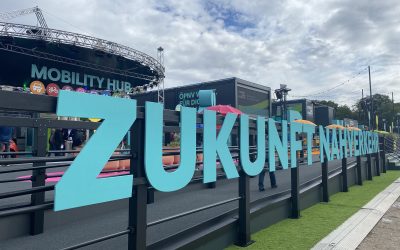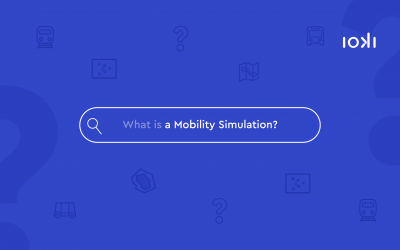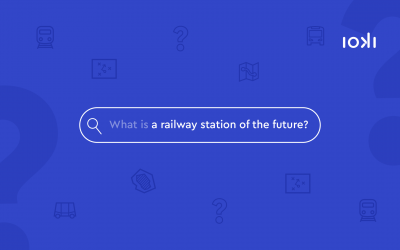Categories
Do we still need our own car? What will our cityscape look like in 20 years? What needs do rural regions have? Which clever minds in the industry think mobility and how? And what do on-demand services and mobility analytics have to do with all this? Questions that we ask ourselves every day in our work and to which we – at least now and then – note our answers and thoughts. For you, for us, for exciting impulses, for more mobility and less traffic.

Digital Mobility on the Move – Insights from the Smart Country Convention 2025
Imagine a city where citizens purchase their bus ticket directly through a service app, book an on-demand shuttle, and effortlessly switch between various modes of transport – without needing additional apps or complex logins. This vision was presented by our colleague Maximilian Rütten and Linus Frank from our partner Vesputi at the Smart Country Convention (SCCON) 2025.
What will the future of the mobility ecosystem look like? IAA 2025, Zeit Konferenz Neue Mobilität, Zukunft Nahverkehr
Last week, Munich was the hub of the mobility world, hosting several mobility events such as IAA Mobility, the Zeit Conference “New Mobility” and Zukunft Nahverkehr as an open space on Königsplatz – the Bavarian capital became the scene of intensive discussions about the mobility of tomorrow. We were right in the thick of things, gaining an understanding of what is driving mobility
Perspectives from Jens Kukuk, Operations Manager at DB Regio Bus Mitte GmbH
Simple, flexible, dependable – high demands are placed on both the control centre and the drivers in bus operations. It is helpful when you can count on reliable software for route management and navigation. Since December 2023, our ioki Route software has been in operation in Speyer. We spoke with Jens Kukuk, Operations Manager at DB Regio Bus Mitte GmbH, about their experience with ioki Route. He explains how the software has changed the daily working routine of drivers on their bus routes and shares his insights from over a year of practical implementation.
What is a Mobility Simulation?
Mobility simulations are digital tools that show how people move around a city or region. In Germany, with its population of over 80 million people, traffic is so complex that we can never capture it completely. Mobility simulations help us build a comprehensive picture despite this challenge.
Perspectives from Julian Renninger (SBB) and Christine Mauelshagen (Swiss Transit Lab)
At the end of November 2024, the Canton of Zurich and SBB announced a pilot project for automated driving in public transport in Furttal near Zurich. The aim of the project is to gain practical insights into automated mobility services in public transport. The Swiss Transit Lab is responsible for the project management. As ioki, we provide the on-demand software for the future project. In our latest “Perspectives from” we talk to the project managers Julian Renninger (SBB) and Christine Mauelshagen (Swiss Transit Lab) about the most recent project for autonomous driving in Switzerland.
What is a railway station of the future?
Railway stations of the future (known in German as ‘Zukunftsbahnhöfe’) are modern mobility hubs that go far beyond the classic function of a train station. Deutsche Bahn is developing stations across Germany into these innovative mobility hubs as part of its ‘Zukunftsbahnhof’ programme, focused on three key characteristics: customer-oriented for greater attractiveness, high-performing to accommodate more travellers, and sustainable in construction and operation. As part of this targeted modernisation programme, selected stations are being developed into attractive transport hubs according to uniform standards.
Driving the mobility conversation forward: ioki insights live goes into its 2nd round
After our successful first event in 2024 under the motto “Moving mobility together”, the second edition of ioki insights live was all about driving the mobility conversation forward. More than 40 mobility experts from across Germany came together in Frankfurt to develop innovative solutions for the mobility of tomorrow.






